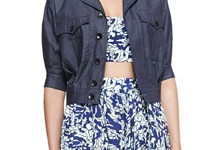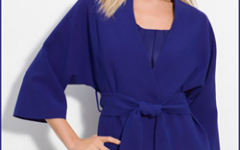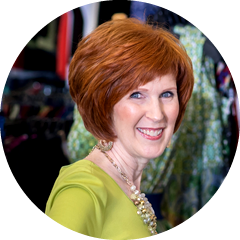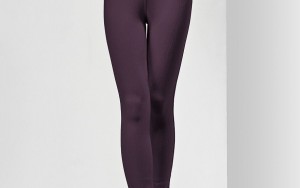Spring is a time of transition and transformation. Maybe that’s why I’ve been talking to so many women who are in the process of changing their jobs. It seems that almost everyone is interviewing!
So, I thought this would be a good time to review the basics of professional dress. These tips are applicable whether you are job hunting or firmly ensconced in a job you love (at least we hope you love it!).
Whether we like to admit it or not, how we look makes a difference. Nowhere is this more true or have greater repercussions than at the office. Unfortunately, however, over the years, the importance of professional dress has taken a backseat to comfort and with far greater consequences than one might think.
As dress codes have relaxed, so have people’s attention to how they look…or, at least this is how it appears. Business casual has lured us into a false sense of security. As my mother would say, “We’ve been given just enough rope to hang ourselves.”
Over the past few years, I have seen increased focus on improving the standard of dress at work. While I doubt we’ll ever go back completely to formal business dress, the trend is moving in that direction, and not just in the more conservative professions. Why? Because companies are unhappy with what they see. It appears that people are not taking pride in how they look, and this reflects directly on the company.
While it might be true that a few people are spoiling it for the majority, the fact remains that there is a movement underway.
Here are just a few reminders:
- Knowledge is power. Know the rules. Become familiar with the dress code. If your company does not have a dress code or it is so vague that it is useless, ask. If you have a question about whether something is acceptable or not, ask. Most supervisors will welcome questions and be impressed you asked. (Believe me, they hate having to be the one to open this discussion!).
Open-toed shoes, for instance, are a constant source of contention at work. They range from flip flops to peep toe heels, from Birkenstocks to slides. Few dress codes are specific which leaves employees to interpret this rule for themselves. This can have disastrous results. When you know what is expected of you, you can make the decision to comply or not. At least you’ll be prepared for whatever the consequences may be.
- Dress for the job you want not the job you have. Dressing well (this does not have to mean flamboyant or over-dressed in any way) shows initiative and helps you stand out from the crowd. If you are looking to advance within the company this sets you apart and gives you the competitive edge. Look at what your supervisor or those in the job you want are wearing. Hopefully, they are good role models.
- Pay attention to detail. What are some company’s pet peeves? Poorly maintained shoes, clothes that do not fit well, messy hair, badly groomed fingernails. Look at your wardrobe objectively. While you might think that stain that is mostly gone isn’t noticeable, I guarantee it is.
- Never underestimate the power of a jacket. The jacket is the most versatile article of clothing you can have in your wardrobe. The nice thing is that there is a jacket style to suit your personal preference and the degree of casual or professional atire you need. As John T. Malloy, author of “The New Women’s Dress for Success” says, “When men dress casually they lose some of their authority. When women do the same, they lost most of theirs. The key to that authority, especially for women in male-dominated fields, is the jacket.”
We’re not talking the early 1980’s here. There is still plenty of room for personal expression in the wardrobe choices you make. We’re talking empowerment. Too many women are walking around in the dark when it comes to the impact professional dress has on their career.
While in a perfect world it wouldn’t matter, the truth is it does. I’m not saying you have to conform. I’m saying, know the rules. Know what is expected and be aware of the potential consequences if you choose not to comply.
Like most things, awareness is the first step. Understanding the expectations and the unspoken rules gives you the advantage. If career advancement is important to you then this is no time to be complacent. Take the lead. Know the rules. If you know what is expected then you can make your own educated decision about whether you choose to comply or disregard the rules. Either way, you are in control.








14 Responses
So true. I would love to see some pictures of good contemporary professional outfits/clothing items.
Thanks, Stephanie. Perhaps I can do that in another blog post…it’s just not always easy to find good examples on the internet but feel free to keep reminding me 🙂
I agree. Ladies, don’t sell yourself short by not taking the time to project your image. Your worth it!nnA faithful fan,nPat
You’re so right, Pat! Thanks for encouraging everyone 🙂
I work at home so my home wardrobe is very casual. However I am a member of a professional organization and when I attend meetings I always try to dress appropriately in business casual attire. (it’s been so much easier to do this since meeting Ginger!) At these meetings I have seen professional women wear clothes that make me cringe. nnThings such as tops that are too short – just meeting the top band of the pants – and therefore show a line of “belly” whenever they move (I must say this is the worst as it really draws the attention in a horrified way). Crocs (need I say more?). Raggy blue jeans and tshirts. nnI have a very difficult time even concentrating on what they are saying because my attention is diverted by what they are wearing. I have to believe this happens to them on the job and it’s not a good thing. nnI have found that dressing better also leads to others treating you better no matter where you are – on the job, at the store, in hotels, and at the airport. To me it’s worth dressing nicer just to receive this better level of attention wherever I am.
That’s all so true, Teresa! I have to believe that part of it is because they don’t know how to do it any better than they are. Professional dress is generally not a topic taught in schools and role models are often less than stellar. And, you’re right. They don’t know what opportunities might be passing them by because their image does not reflect the image of the company.
I went to a meeting the other day and there were several professional women there. Three of them had on black pantsuits, plain tops, and a scarf. That seems so boring to me! What are alternatives?
You’re absolutely right, Anne. That is boring but sometimes women just don’t know what else to do and it feels safe! There are so, so many other options. Color is probably the first place to start. How about a colored jacket or sweater instead of a a black top. Of course, you have to know which colors flatter you but that’s easy to remedy by having a color analysis if you don’t know. Jewelry can also change it up a bit and add personality. And, the jewelry that is out there right now is gorgeous!
Thanks, Ginger! Most of my jackets are multi-colored. I’ll probably have to get something a bit more formal for presentations, but it won’t be black! I did have a color analysis done, and I’m a Spring, so I’ll look for one of my neutrals.
Anne, so glad it won’t be black 🙂 You might want to consider looking for a jacket in one of your beautiful colors that makes you shine rather than a neutral — if you’re going to be presenting. You want to stand out, look radiant, and bring focus to your face.
These are great tips Ginger! It’s amazing how many professional women overlook the details that can turn an outfit from drab to fab!
You’re absolutely right, Deborah.u00a0 Why settle for okay when you can have great!u00a0 Thanks 🙂
Agreed! Also, I love the comment about paying attention to details like making sure your clothes are tailored to fit your body and finishing touches like nicely styled hair and neat nails (whether polished or not).
Fit is one of those things that many women overlook (although that is getting to be less and less true which is great).u00a0 If you only buy things that fit you perfectly you are limiting your options.u00a0 A good (the good part is key!) tailor can help put the refining touches on something and make it look like it was made for you!